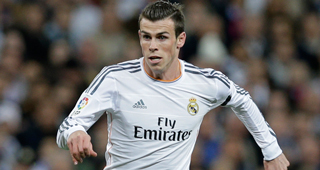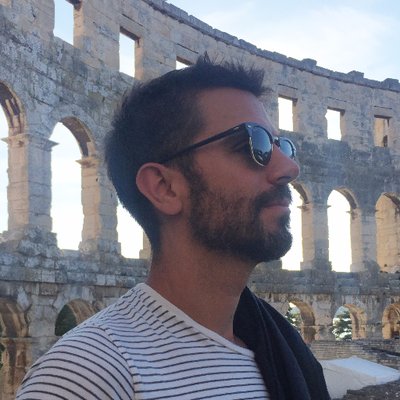The finest way to take dead aim on the rich boys, to get them in the crosshairs and take them down in European football is to turn talent the world has identified as mid-level to a strong ensemble of late bloomers. Borussia Dortmund has accomplished this feat repeatedly over the past few seasons and Atlético Madrid has done likewise this season to secure a place in the Champions League Final against Real Madrid.
There are several easy parallels of Atleti to Dortmund:
1. Diego Simeone – Jürgen Klopp (charismatic, energetic, iconically dressed, brilliant tacticians)
2. Diego Costa – Robert Lewandowski (strikers that developed into world class talents after they were acquired on the cheap)
3. Koke – Mario Götze (homegrown, young midfielder)
4. Real – Bayern (goliath opponent in the final from their own country)
Atleti has won the Europa League twice since 2010, but they haven’t had real domestic success of late until this season unlike Dortmund's Bundesliga wins in 2011 and 2012.
Atleti has also been consistently involved in transfers on a far greater scale than Dortmund.
Since 09-10, Atleti have received $335 million in transfer fees while spending just $271 million to create a net profit of approximately $13 million per season on average.
Atleti has been a striker factory, selling Fernando Torres to Liverpool in 07-08, Sergio Agüero to Manchester City in 11-12 and Falcao to AS Monaco last summer. Torres came up with the club, but Agüero and Falcao (especially Falcao) were expensive acquisitions.
Atleti’s ability to be more agile than Real and Barcelona in their roster acquisition will be particularly useful in the age of Financial Fair Play. The type of depth that those level of clubs will always give them an advantage long-term domestically, but competing in Europe is realistic if that’s a priority, particularly since the knockout stage can produce unexpected results.
We saw Manchester United, a team that was an utter failure in the EPL, briefly be in position to advance in the second half of their second leg against Bayern during the quarterfinals.
Atleti is scheduled to move into the Estadio La Peineta in 2016, which could also allow them to sustain their revenues if they continue to be a viable top-4 club in Spain.
Diego Costa has become a world class striker, but they have won a lot either without him or without him contributing. Simeone manufactured a back four out of Juanfran, Diego Godín, Joao Miranda and Filipe Luis that will dismantle the opposing attack while also scoring at important times. None of those players were particularly valued just two years ago and now they would step right into most elite clubs seamlessly.
All four players are in their late 20s and the way Juanfran in particular has evolved after being unable to establish himself at Real early in his career has been remarkable.
This aggression and Simeone’s praise of his players’ fearlessness that he attributes to their mothers has Atleti in the final with better than a puncher’s chance, with a goalkeeper on loan from Chelsea to boot.
------
For Real Madrid, they resemble last seasons’ privileged Bayern club in putting together a well-rounded roster to support their superiority on the wings. Cristiano Ronaldo and Gareth Bale are basically the Michael Jordan and Scottie Pippen to Arjen Robben and Franck Ribery’s Isiah Thomas and Joe Dumars; bigger, faster, stronger (bigger, faster, stronger by 10x if we're truly being honest). Ronaldo and Bale have a level of pace and athletic superiority that no back line in the world can slow down indefinitely when they’re reasonably healthy.
Bale was a finishing piece and he won Real the Copa del Rey with one of the most remarkable goals of the decade, but there was significant addition by subtraction in hiring Carlo Ancelotti to replace José Mourinho, as well as the sale of Mesut Özil to Arsenal. Özil is one of my favorite players in the world, but he’s in a much better position to be the best player on a club like Arsenal rather than just another talented midfielder on Real. More importantly, however, his departure has given Luka Modric and Ángel di María more freedom and they simply play with the higher two-way energy Real needs in the midfield.
Furthermore, Özil and Isco have a clear overlapping skill-set and the acquisition of the latter earlier in the past summer from Malaga made Real younger.
Despite their tremendous depth of weaponry, Real will be without Xavi Alonso due to suspension, while Ronaldo, Bale and di María have been dealing with injuries. Real looked like an unstoppable force with gunpowder sprinkled on their possession against Bayern when they advanced 5-0 on aggregate, but they have been incredibly pedestrian in their subsequent La Liga games. Even the most venerable clubs in the world are susceptible to these peaks and valleys that places them under scrutiny.
There are so many times in which Real and Barcelona are basically playing against 11 mannequins in La Liga, but this year has been different. Real has finished La Liga with over 100 points in the previous four seasons, with an amazing 121 in 11-12, but they won’t even hit 90 this season. That total was more than enough as recently as 2008, but the arms race against Barcelona’s generation raised the stakes, and that makes Atleti’s season all the more remarkable.
Real are clear favorites, but not by as wide of a margin last season when Bayern had a clear advantage against Dortmund with Götze out injured. Atleti beat Real at the Bernabeau last May in the Copa del Rey Final in an extraordinary match in which Ronaldo scored early, while Diego Costa equalized in the 35th minute and Miranda had the game-winner in the 99th minute. It was Atleti’s first win over Real in 25 matches since 1999.
Real returned to form against Atleti in the two legs of their Copa del Rey semifinal tie with a 5-0 aggregate score, but Simeone’s side won their first La Liga match 1-0 in September before a tie in March.
This will be the sixth match between the two sides in a 365-day period and undoubtedly will be a close one.
rn
rn


